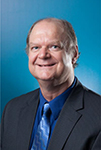The hydrocarbon potential of the 2015 Offshore Acreage Release Areas for petroleum exploration
Thomas Bernecker A , Tehani Kuske A , Bridgette Lewis A and Tegan Smith AGeoscience Australia
The APPEA Journal 55(1) 71-104 https://doi.org/10.1071/AJ14007
Published: 2015
Abstract
The Australian Government formally releases new offshore exploration areas at the annual APPEA conference. These areas are located across various offshore hydrocarbon provinces ranging from mature basins with ongoing oil and gas production to exploration frontiers. A total of 23 areas are released for work-program bidding and six areas for cash bidding (Fig. 1). The two work-program bidding rounds will remain open until 29 October 2015 and 21 April 2016, respectively, while cash bid submissions will close on 4 February 2016.
The 2015 Release Areas are located in 13 distinct geological provinces across eight basins and all were supported by industry nominations. Six areas are located in the Bonaparte Basin, two of which are cash bid areas over the Turtle/Barnett oil accumulations. In the Browse Basin, three areas in the Caswell Sub-basin and one area on the Yampi Shelf are released. In support of recent exploration activities and success, one large area has been gazetted in the central Roebuck Basin. The Northern Carnarvon Basin offering comprises 11 areas on the Exmouth Plateau and in the Dampier Sub-basin, including four for cash bidding. This year, the usual predominance of North West Shelf Release Areas is counterbalanced by seven large areas in the Bight, Otway, Sorell and Gippsland basins. This includes one area in the Ceduna Sub-basin, three areas in the deepwater Otway Basin, one area in the northern Sorell Basin and two areas in the southeastern Gippsland Basin. The nominations received for these areas highlights the industry’s interest in evaluating the hydrocarbon potential of Australia’s underexplored southern margin.
Geoscience Australia continues to support industry activities by acquiring, interpreting and integrating pre-competitive datasets that are made freely available as part of the agency’s regional petroleum geological studies.

Thomas (Tom) Bernecker is a sedimentologist/petroleum geologist who holds a Master of Science degree from the University of Aachen, Germany, and a PhD from Melbourne’s La Trobe University. He has worked on various coal- and hydrocarbon-bearing basins in Europe, and later in Australia where his initial focus was the petroleum geology and the hydrocarbon prospectivity of the Gippsland and Otway basins. Tom joined Geoscience Australia in 2007 where he now manages the Offshore Petroleum Acreage Release and Promotion project. Member: PESA, SEPM and SEAPEX. |

Tehani Kuske is a geoscientist at Geoscience Australia, and part of the energy systems group in the resources division. She gained her MSc (Hons) in micrometeorology from the University of Waikato, New Zealand. Tehani has been with Geoscience Australia since 2009 and has been involved with various projects, including greenhouse gas monitoring, petroleum acreage products and onshore basin studies. She is involved in onshore energy systems studies, and is interested in petroleum systems modelling. Member: PESA. |

Bridgette Lewis is a sedimentologist with the Resources Advice and Promotion Branch at Geoscience Australia. In 2008 Bridgette joined Geoscience Australia and has since been involved in several projects including sedimentary hosted mineral systems, the international Mining for Development program, offshore petroleum acreage release, and unconventional resource assessment. Bridgette gained a BSc/BA in geology and psychology, followed by a MSc in sedimentology and geochemistry from the University of Otago in New Zealand. Bridgette is a committee member of PESA-ACT. |

Tegan E. Smith is a stratigrapher in the Resources Division at Geoscience Australia. She completed a BSc at the University of Tasmania with a double major in Earth science and zoology, then joined the Australian National University (ANU) for her honours year. In 2007 Tegan undertook a PhD at ANU, then joined Geoscience Australia in 2011. She joined the Basin Resources Group as a biostratigrapher in early 2012, and moved to her present role in the Resources Advice and Promotion Branch in 2014. Tegan is a member of PESA and Australian Science Communicators (ASC). She is presently branch secretary of PESA-ACT. |


